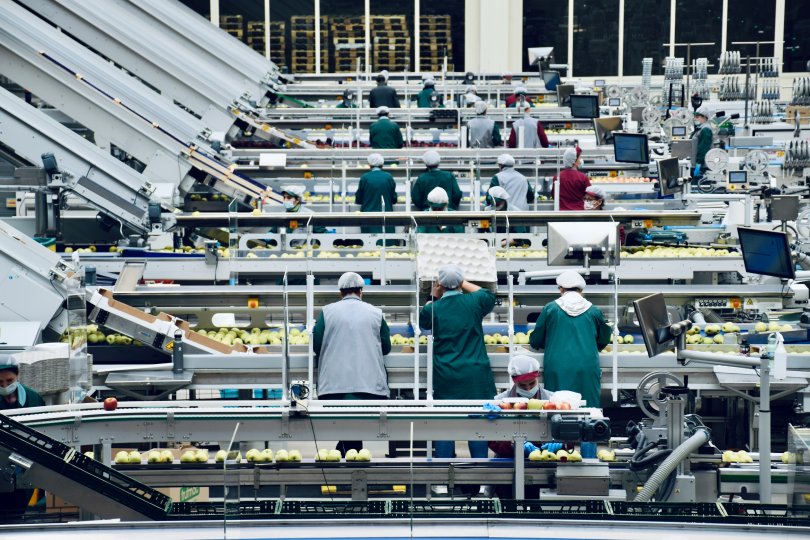
Health and environment
Between 1970 and 2010, sugar consumption increased significantly worldwide. At the same time, the growing number of patents linked to agri-food innovations has contributed to a deterioration in daily nutritional intake, as economists Anne-Célia Disdier, Fabrice Etilé and Lorenzo Rotunno pointed out in a recent article. Their investigation into the world of industrial food production raises concerns about the public health impact of this economic model.
‘Without corn, there is no country’ is the slogan of a Mexican advertising campaign aimed at banning genetically modified (GM) corn, intended for human consumption, from the United States. Although Mexico is the birthplace of maize, with almost 60 varieties preserved since it was domesticated 10,000 years ago, this sacred seed is now under serious threat from the introduction of transgenic maize from the United States. Initially intended mainly for livestock farming under the Free Trade Agreement (NAFTA, 1994), it has gradually entered the food industry chain, where it is used to produce low-cost food.
However, the Mexican government now plans to ban the use of GM maize for human consumption from 2024. This decision was not to the liking of the United States, where it was denounced as a violation of free trade agreements. In response, with scientific literature to support their case, the Mexican authorities stressed that genetically modified maize is a danger to the health of their citizens. Researchers Osea Giuntella, Matthias Rieger and Lorenzo Rotunno have previously documented the extent to which Mexico opening up to the global market - and in particular the increase in imports of US products - has changed the eating habits of Mexicans, and increased obesity among women by up to 20%. The nutritional balance of Mexicans has also been influenced by food innovations, such as GMOs.

Picture by Julia Sudnitskaya on Adobe Stock
Since the 1990s, the number of such innovations has multiplied as markets have become more open to globalisation. The two go hand in hand: innovations are profitable only if they are developed on a large scale: the size of the market must be large enough to recoup the associated production costs. While poor eating habits can be linked to the rise in international trade and imports of industrial products, they are also influenced by the increase in new agri-food technologies. This hypothesis forms the basis of an analysis performed by economics researchers Anne-Célia Disdier, Fabrice Etilé and Lorenzo Rotunno on the impact of these innovations on the nutritional habits of people living in 67 countries (38 high-income countries and 29 middle-income countries), between 1970 and 2010.
The number of registered patents is a sound indicator of increasing innovation in the food industry. Over the total period from 1970 to 2010, the authors calculated a 138% increase in food patents for high-income countries, and the increase was as high as 246% for middle-income countries. According to AgroMédia, between 200 and 250 patents a year are filed by the agri-food industry. In addition, the number of patents relating exclusively to ultra-processed foods increased over the period, accounting for 40% of the total number of patents.
As well as preventing counterfeiting and unfair competition between companies, patents can also be a means of rewarding research and development efforts. Innovations can enable companies to meet their profitability requirements as well as respond to new consumer health issues, as is the case with the patenting of anti-allergenic products such as gluten-free waffles or vegan substitutes for animal proteins, for example. Patents may relate to recipes, food preparation technologies, food components such as sweeteners, or genetically processed foods. They may even be extended to the pasta we eat, as was the case with the helix shape of Barilla's tortiglione, which was patented in 2017.
However, despite technical and health advances, the proliferation of food patenting could have damaging consequences for people's diets. Over the period studied by the authors, from 1970 to 2010, calorie intake from fats (from oil, butter or cream) increased by 30% in high-income countries and by up to 78% in middle-income countries who also saw calories from sugars increase by up to 25%. So what impact is this ever-increasing food innovation having on people’s nutritional intake?
By combining data from the Food and Agriculture Organisation of the United Nations (FAO) and global patent statistics (PATSTAT), the authors found that there is a negative correlation between patents, and people's nutrition. In high-income countries, a doubling in the number of patents was associated with a 1.3% increase in the proportion of sugars in calorie intake over the first period from 1970 to 1989, and a 4.4% increase in the proportion of fats over the second period up to 2010.
The negative consequences are even more apparent in middle-income countries, where a doubling in the number of patents between 1990 and 2010 corresponded to an 8.2% increase in the proportion of sugar in overall calorie intake. At the same time, in both sets of countries, the proportion of complex carbohydrates contained in cereals, as well as fats and vegetable proteins, fell considerably.

Picture by Tom Muller on Unsplash
Rather than always benefiting human health, food patents and openness to international trade can have a negative impact on the nutritional quality of food. These consequences are more pronounced in middle-income countries than in developed countries, which have already undergone a nutritional shift. This transition is marked by changes in eating habits, coupled with sedentary lifestyles linked to new ways of working. However, many rich countries have limited this trend by promoting regular physical activity and promoting healthy eating, while middle-income countries are still in the process of making the transition. The consequences for people's health are considerable, as in Mexico, where rates of obesity, diabetes and cardiovascular disease are alarmingly high. However, the health dangers posed by ‘advances’ in the agri-food industry apply to all citizens to varying degrees, regardless of their country of origin.
The public authorities have introduced various measures to limit the harmful effects of a diet increasingly impacted by industrialisation. Some of the policies aim to raise public awareness of the health hazards of unhealthy eating. In this respect, Chile was the first country to introduce the labelling of products containing excessive amounts of sugar, saturated fat, or salt, in 2016. This has resulted in an adjustment to the dietary composition of products marketed by companies. After six months of implementation, 18% of food products were reformulated to avoid negative labelling. The Chilean initiative has been followed by programmes in Israel, Peru, Mexico, Uruguay and Brazil, while France, the United Kingdom and Australia have opted for voluntary ‘scoring’ systems.
Such policies can also directly target new technologies and food innovations, notably by introducing food safety standards at national level or when signing trade agreements. It was by these means that Mexico first banned the import of GM corn for human consumption. Nevertheless, these measures cannot be truly effective if the growth of industrial agri-food production continues unabated. And, if forecasts are to be believed, the number of innovations in this field is unlikely to slow down any time soon.

Picture by Arno Senoner on Unsplash
The findings of the article provide food for thought about the consequences of the current economic model. Indeed, the period 1970-2010 was marked by a considerable increase in economic development, with per capita GDP rising by up to 27% in high-income countries. This development has gone hand in hand with ever more rapid urbanisation, the increasingly active participation of women in the labour market, and the opening up of the global market. Food innovations have proliferated, while at the same time nutritional quality has declined, leading to a deterioration in people's health. New eating habits have led to an increase in diseases linked to obesity and overweight, as well as an increased risk of cancer.
In order to make the most of the economic and social benefits of new ideas without jeopardising the health of the public, patents can be regulated not only at national but also at regional level. There are many discussions currently underway on this point, as shown by the discussions between the European Parliament and the European Patent Office (EPO) since 2011. While in 2019 the European Parliament reiterated its resolve to ban patents on naturally-bred plants and animals, the EPO as an independent body has not always followed these parliamentary resolutions. By highlighting the limits of food innovations on public health, the economists' conclusions could well shed light on the debate. Beyond that, the findings invite consumers to be more vigilant about the provenance and nutritional quality of the food that they buy or grow.